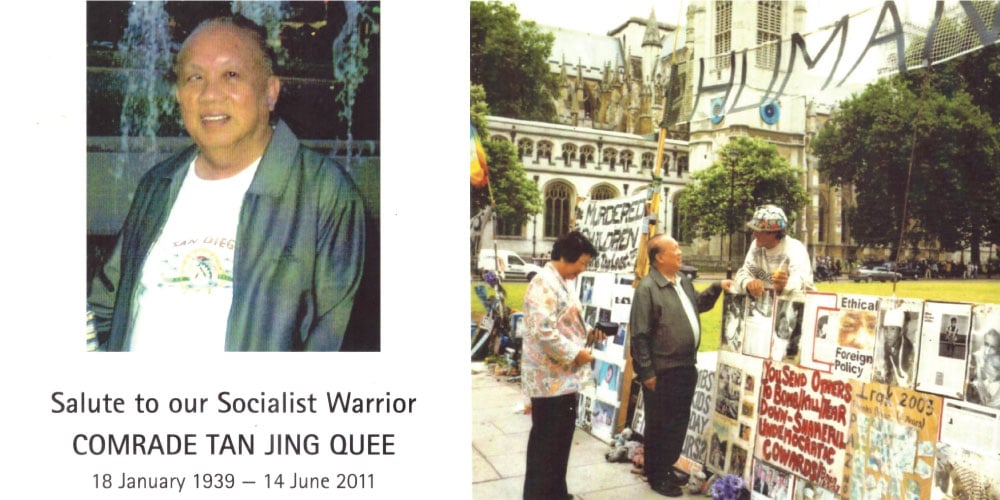During the launch of the book commemorating Singapore’s bicentennial, 200 Years of Singapore and the United Kingdom, Ambassador-at-large Tommy Koh said that Major-General William Farquhar did more for the success of Singapore than Sir Stamford Raffles
The book features a collection of essays by scholars, historians and subject specialists from Singapore and the UK about Singapore’s journey over two centuries.
Those who worked on the book include histories Kwa Chong Guan, Alber Lau, Tan Tai Yong, Karl Hack, and Anthony J. Stockwell as well as former civil servant J. Y Pillay. Professor Koh co-edited the book with British High Commissioner to Singapore Scott Wightman.
Prof Koh said that both he and Mr Wightman felt that “Raffles has been given too much credit and the first two Residents, Farquhar and John Crawfurd, too little, for the success of early Singapore”.
Thought Raffles laid down broad principles and plans for the new port in Singapore, it was Farquhar who created the circumstances that allowed the port to flourish, says Dr Graham Berry in the book.
The former Scottish Arts Council chief executive said that the differences in opinion between Raffles and Farquhar led to the formers successful campaign to remove the latter from the island.
Prof Koh described this perspective as being a ‘new insight’ into Singapore’s early colonial history.
However, this insight really isn’t all that novel. Back in 2015, architectural historian Dr Imran Tajudeen shared that William Faquhar was the one who should be credited more for Singapore’s formation.
During his presentation at the ‘Singapore Dreaming’ Conference, Dr Tajudeen noted that there is a longer history of Singapore that is rarely talked about.
In the early 19th century, there was already an existing Bugis population in the Kg Gelam area, a remnant of the successful traders from the thriving Riau port which was destroyed by the Dutch in the 18th century, before Singapore was founded. After the destruction of Riau, these trader moved to Kg Gelam in what is now Singapore.
Stamford Raffles, upon arrival on the island, had his own ideas and plans for Singapore city which revolved around developing the riverside area of Telok Ayer. However, William Farquhar focused his attention on the already thriving Bugis population further down the river at Kg Gelam.
A watercolour drawing on Singapore in 1856 showed a trail of trade ships moving down the river towards the Kg Gelam area – clearly showing that the Bugis traders there were already thriving.
Dr Tajudeen said it’s difficult to imagine a scenario other than the one that has been presented so far of Singapore being Raffles’ ‘Malta of the East’ because it is so ingrained in us that the Malay role in Singapore is merely in the background of history, that they didn’t do much. That is because we never ever hear about Kg Gelam or the Bugis’ as successful traders in the pre-British era – we only ever hear about what Raffles did to build up Singapore in the Telok Ayer area. Farquhar on the other hand saw the potential in the urban population in Kg Gelam and cultivated it.
Making that same point, historian Kwa Chong Guan said that Singapore wasn’t even Raffles first choice as a place for the British to set up a trading post in the Straits of Melaka. In fact, it was his superior, the Marquees of Hastings, that preferred the southern end of the Straits of Melaka.
Besides, Raffles had only made three short visits to Singapore. While he was here, he merely reported on the well-being and development of the colony which were led by William Farquhar.
And in a book titled One Hundred Years of Singapore (1921) by Roland Braddell, Gilbert Brooke, and Walter Makepeace, the authors noted that Raffles left Singapore after having done what he set out to do – set up a new trading post in the Straits of Melaka – he departed from the new settlement and left William Farquhar in charge as Resident and Commandant.
In the same presentation with Dr Tajudeen, Mr Kwa Chong Guan, Adjunct Associate Professor at the National University of Singapore Department of History, and the lead author of the book ‘Singapore: A 700-Year History’ noted that Singapore was not Raffles’ first choice for the British station but instead, had considered Riau. It was Francis Rawdon-Hastings, Governor and Commander-in-Chief of India who had preferred the Southern end of the Straits of Melaka.
All these accounts suggest that Raffles was indeed the founder of Singapore but not the real driver behind it’s development and rise to early economic success. In fact, it was first British Resident and Commandant William Farquhar and the growing mercantile community that pushed Singapore forward. It’s a perspective that has been explored before by historians in the past several times over.








